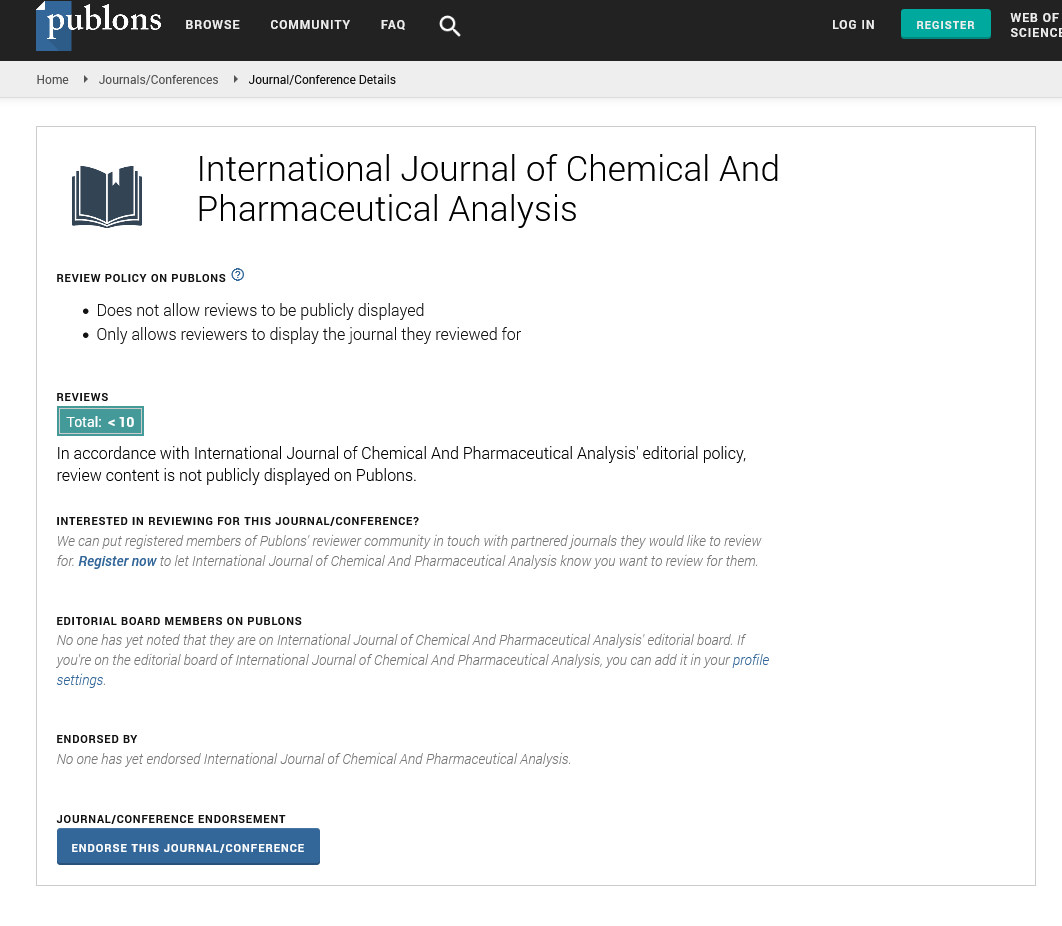Abstract
Author(s): Farah Irama, A.A. Siddiquia, Aftab Ahmadb, S.A. Khanc, Asif Husaina*
Eslicarbazepine acetate (ESA) a potent sodium channel blocker and an antiepileptic drug were subjected to various stress
conditions as recommended by ICH guideline which includes hydrolytic, oxidative, thermal, and photolytic stress. The degradation
studies show that ESA degraded in alkaline hydrolytic condition only while it found to be stable in other stressed conditions. A
single degradation product emerged in UPLC studies on Waters Acquity BEH 150 x 2.1 mm, 1.7 μm, C18 column using mobile
phase A (0.01M potassium dihydrogen orthophosphate and acetonitrile; 90:10 v/v) and mobile phase B (acetonitrile-watermethanol;
75:5:25 v/v) in the ratio of 50:50 (v/v) at RT 1.83 min with 0.2 ml/min flow rate and 2μl injection volume. The obtain
degradation product from Eslicarbazepine acetate was isolated and characterized by IR, 1HNMR and UPLC-MS/MS analytical
techniques. IR evaluation exhibited peaks at 3475.73 cm−1, 3363.86 cm−1, 1726.29 cm−1 for O–H, COO–H and C=O group,
respectively. 1H NMR spectrum showed singlet at 11.865 which indicated the presence of COOH group. UPLC-MS/MS analysis
shows molecular ion peak at 255.2 m/z. The recognized peak in the obtained spectrum confirmed the structure of the degradation
product as 10-hydroxy-10,11-dihydro-5H-dibenzo[b,f]azepine-5-carboxylic acid which was formed by alkaline hydrolytic
degradation.




